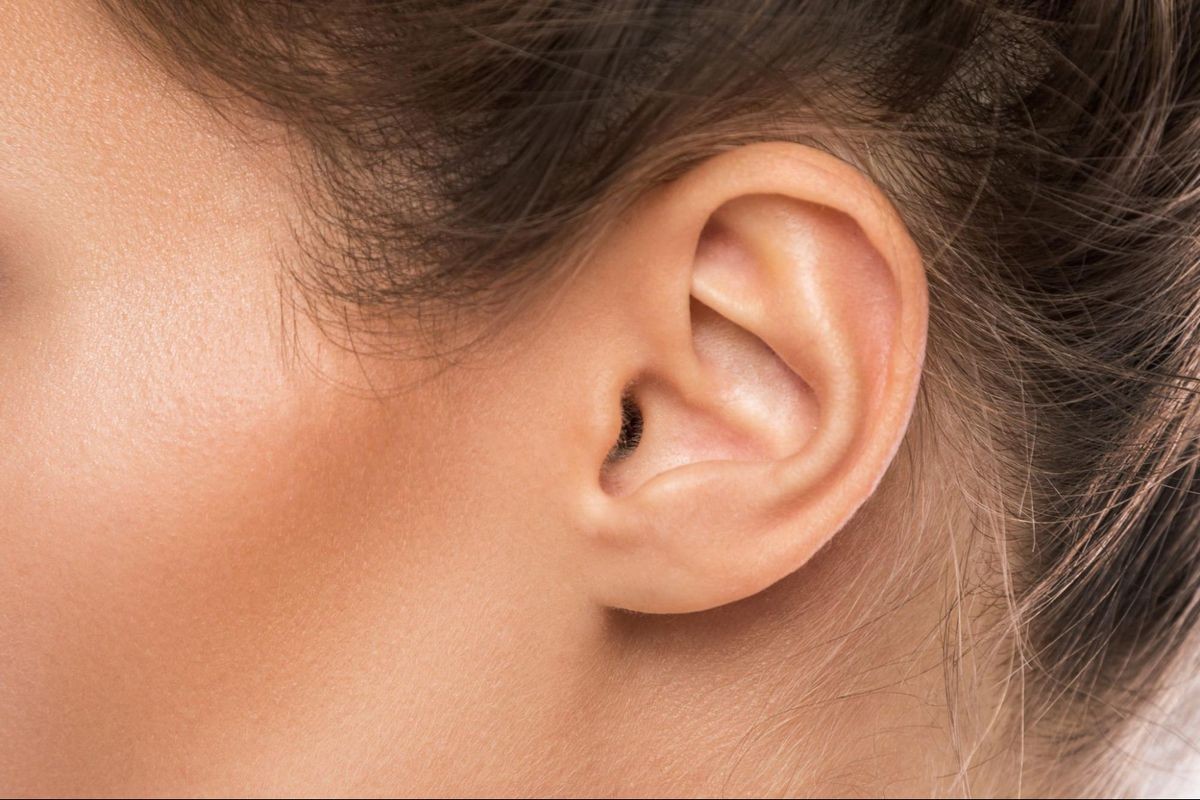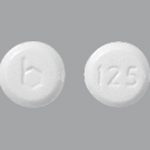
Contents
- 1 Clearing Blocked Eustachian Tubes: How Can You Do It?
- 1.0.1 Symptoms of Blocked Eustachian Tubes
- 1.0.2 Causes of Blocked Eustachian Tubes
- 1.0.3 Who Can Experience Blocked Eustachian Tubes?
- 1.0.4 Tests for Blocked Eustachian Tubes
- 1.0.5 Treatments for Blocked Eustachian Tubes
- 1.0.6 Side Effects of Treatments for Blocked Eustachian Tubes
- 1.0.7 Do Ear Infections Resolve on Their Own?
- 1.0.8 What Causes Ear Infections?
- 1.0.9 What Are the Signs and Symptoms of Ear Infections?
- 1.0.10 How Are Ear Infections Diagnosed?
- 1.0.11 How Are Ear Infections Treated?
Clearing Blocked Eustachian Tubes: How Can You Do It?
To clear blocked eustachian tubes, you can use medications, home remedies, or undergo surgery. However, in most cases, eustachian tube treatment is unnecessary as the blockage usually resolves itself.
Eustachian tubes are located inside the ears and serve to connect the middle ear to the back of the nose. Their functions include draining fluid from the ears, regulating air pressure, and preventing the entry of germs.
These tubes connect the middle ear to the throat. They open up when you yawn or swallow, allowing the pressure inside the ears to match the pressure outside. Sometimes, fluid or pressure can become trapped in the ear or swelling can occur, resulting in blockage of the tubes. This leads to increased pressure outside the tubes, causing pain.
Symptoms of Blocked Eustachian Tubes
Blocked eustachian tube symptoms may include:
- Dizziness
- Ear pain
- A sensation of fullness in the ear
- Ringing in the ears
- Popping in the ears
- Muffled hearing
In young children, you may notice that they repeatedly pull or rub their ears.
Causes of Blocked Eustachian Tubes
Blockage in the eustachian tubes can be caused by sinus infections, colds, allergies, or swelling. This can lead to fluid buildup in the ear, resulting in ear pain, a feeling of fullness, or an ear infection.
Changes in air pressure, such as while scuba diving, flying, or driving up or down a mountain, can also affect the air pressure in the ears.
Other conditions that can cause blocked eustachian tubes include a deviated septum in the nose, poor muscle tone around the tubes, a cleft palate, swollen adenoids, ear damage, acid reflux, radiation, and exposure to smoke and secondhand smoke.
Who Can Experience Blocked Eustachian Tubes?
Anyone can experience blocked eustachian tubes, often due to swelling and fluid buildup from a cold or allergies. Individuals who scuba dive or fly frequently are also more prone to blocked tubes due to rapid pressure changes.
Among all age groups, children are the most susceptible to blocked eustachian tubes. The tubes in children are shorter and easily become blocked.
Tests for Blocked Eustachian Tubes
A physical examination by a doctor can help identify symptoms of blocked eustachian tubes. The doctor will check for swelling and redness in the ears and throat and may also examine the adenoids for swelling. They may inquire about symptoms like pain and pressure and take your temperature.
If you have chronically blocked eustachian tubes, the doctor may recommend a hearing test or look for underlying causes.
Treatments for Blocked Eustachian Tubes
In most cases, blocked eustachian tubes resolve on their own and do not require treatment. However, you can take steps to alleviate your symptoms.
Medications
Over-the-counter medicines can be helpful in treating blocked eustachian tubes. These may include pain relievers, decongestants, antihistamines, and saline nasal sprays. Antihistamines and saline sprays help clear excess mucus and fluid caused by allergies, colds, or sinus infections.
If your symptoms persist, your doctor may prescribe antibiotics for an ear infection or corticosteroids to reduce swelling.
Home Care
Home remedies can provide relief for blocked eustachian tubes. You can equalize pressure, loosen fluid, and alleviate pain by chewing gum, swallowing, yawning, blowing up a balloon, plugging your nose and blowing, sucking on a candy, or applying a warm washcloth to the ear. However, avoid giving chewing gum or hard candies to children under four years old.
If you have allergies, avoiding allergens can also help improve sinus and ear problems. It’s advisable to consult your doctor for other potential treatment options.
Surgery
In certain cases, surgery may be necessary for eustachian tube treatment, especially if the problem is chronic and other treatments have been ineffective. Children with chronic ear infections may undergo a procedure to insert a small ear tube that aids in fluid drainage. The ear tube will naturally fall out after a few months.
In some cases, your doctor may make a small incision in the eardrum to drain the fluid. Surgery to correct a deviated septum or cleft palate may also be recommended if these conditions affect the eustachian tubes and cause symptoms.
Side Effects of Treatments for Blocked Eustachian Tubes
Surgery carries potential risks of complications, although these are uncommon. Local anesthesia is typically used to reduce the risks associated with general anesthesia. Side effects of ear tube surgery include crusting, infection, obstruction, and a ruptured eardrum, but these side effects are rare.
If you attempt to clear your ears by blowing forcefully, you may rupture your eardrum. It’s important to be gentle. Blowing your nose forcefully during a cold or infection can introduce mucus into the ear and lead to an ear infection.
Do Ear Infections Resolve on Their Own?
Ear infections are common and often resolve on their own within a few days, even without medical intervention.
While ear infections are more common in children, they can also occur in adults and cause pain due to fluid buildup in the ear.
The most frequent type of ear infection is middle ear infection or otitis media, although infections can also affect the outer and inner ear due to bacterial or viral causes. Ear infections can be acute, occurring over a short period, or chronic, persisting over an extended period of time.
If your ear infection is accompanied by severe pain, fever, or ear discharge, it is advisable to consult a doctor. Ear infections in infants under six months of age require medical attention.
What Causes Ear Infections?
Ear infections can occur due to blockages in the eustachian tubes, which regulate air pressure and drain fluid in the middle ear. Blockages can lead to fluid accumulation and subsequent infection.
Infants and children are more prone to ear infections because their eustachian tubes can become easily clogged. Bottle-fed infants have a higher risk of ear infections compared to breastfed infants.
Common causes of ear infections include allergies, colds, sinus infections, infected or enlarged adenoids, and exposure to tobacco smoke.
Risk factors for ear infections include a family history of ear infections, changes in altitude or climate, cold weather, exposure to smoke, pacifier use, recent upper respiratory tract infections, and birth defects affecting eustachian tube function.
What Are the Signs and Symptoms of Ear Infections?
Symptoms of ear infections in infants may include refusal to feed, irritability, inconsolable crying, fever, and trouble sleeping.
Older children and adults may experience ear pain, a feeling of fullness in the ear, hearing loss in the affected ear, fluid drainage from the ear, nasal congestion, cough, lethargy, dizziness, nausea, vomiting, a general feeling of illness, and loss of appetite.
Sudden drainage of yellowish or greenish fluid from the ear may indicate a perforated or ruptured eardrum.
How Are Ear Infections Diagnosed?
After obtaining a complete medical history and assessing the symptoms, doctors may examine the ears using an otoscope. This instrument helps visualize areas of redness, bulging of the eardrum, ear discharge, air bubbles or fluid behind the eardrum, and perforations in the eardrum.
In cases with a history of ear infections, doctors may recommend a hearing test.
How Are Ear Infections Treated?
Treatment for ear infections depends on the patient’s age, symptom severity, and the underlying cause of the infection. Many ear infections resolve on their own without medical intervention. Pain relief and rest are often sufficient. Applying a warm compress to the affected ear and taking over-the-counter pain relievers like ibuprofen or acetaminophen can provide relief. However, aspirin should not be given to children.
If there is no improvement or if symptoms worsen, it is advisable to consult a doctor to determine if antibiotics are necessary. Ear drops should be avoided unless eardrum perforation has been ruled out.
If the infection does not respond to medical treatment, your doctor may recommend a procedure to insert a small tube into the eardrum, facilitating fluid drainage.
References:
1. Family Doctor: "Eustachian Tube Dysfunction."
2. Health Technology Assessment: "Interventions for adult Eustachian tube dysfunction: a systematic review."
3. Stanford Health Care: "Eustachian Tube Problems."
4. Stanford Health Care: "Treatments for Eustachian Tube Dysfunction."
5. Texas Sinus Institute: "Eustachian Tube Dysfunction."
6. Waitzman AA. "Otitis Externa. Medscape."
7. Waseem M. "Otitis Media."
8. Waseem M. "Otitis Media."


